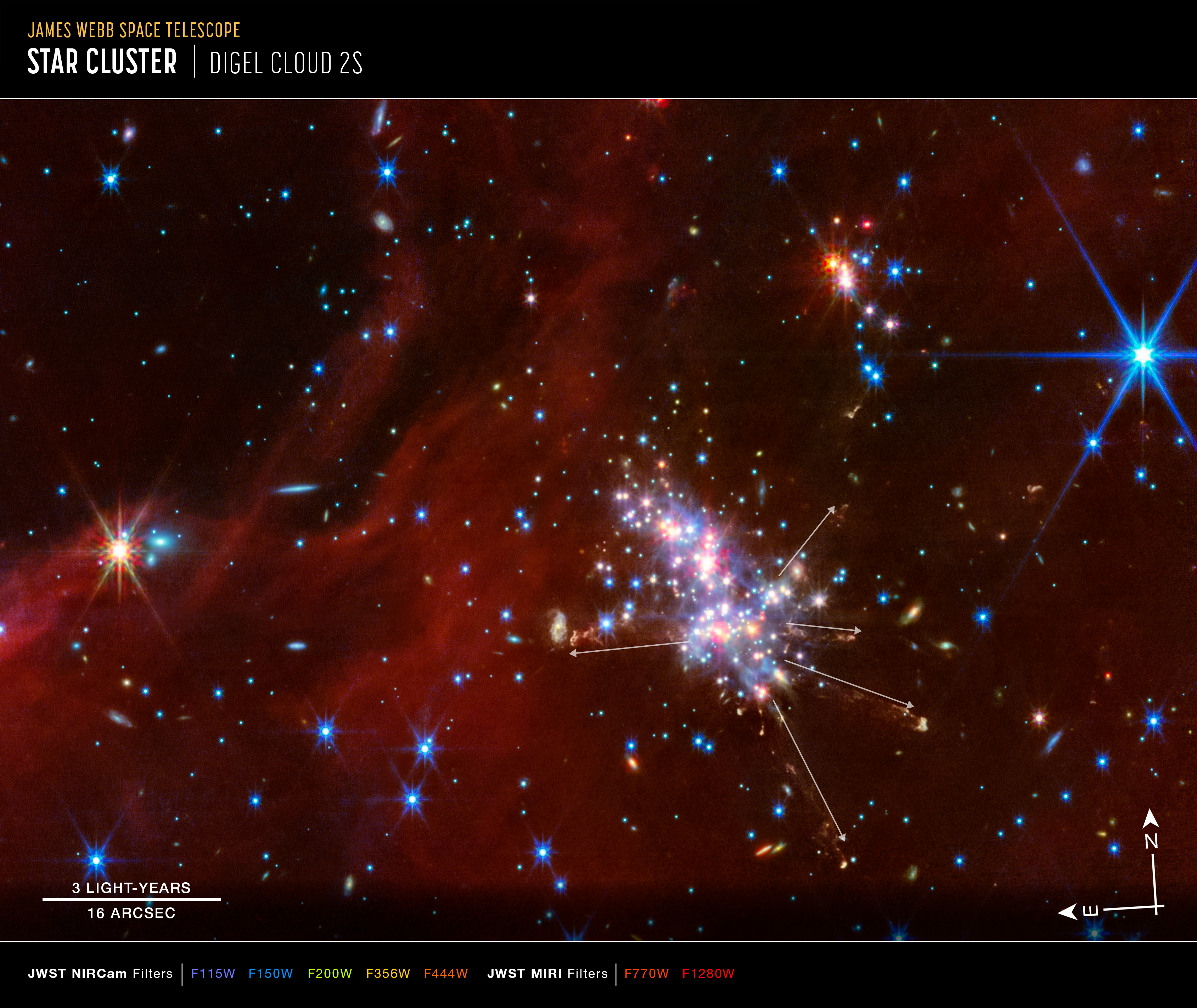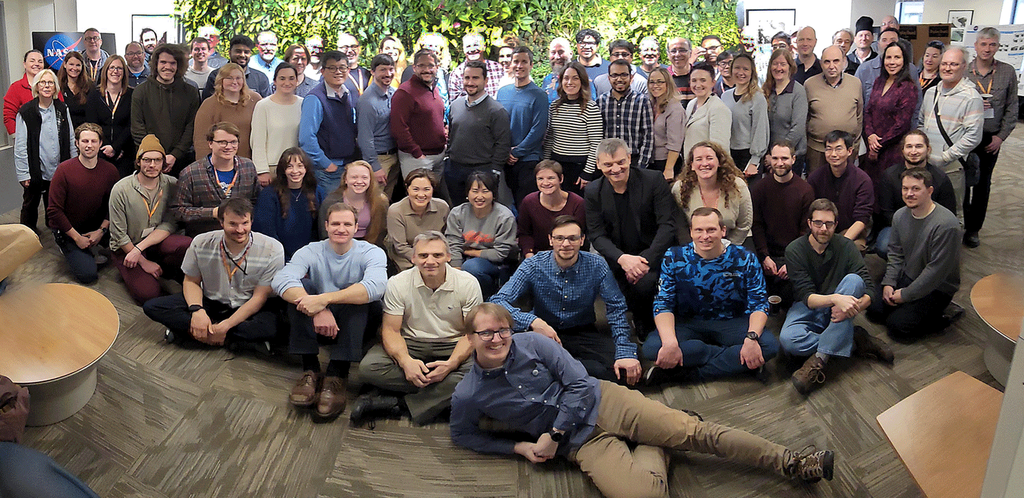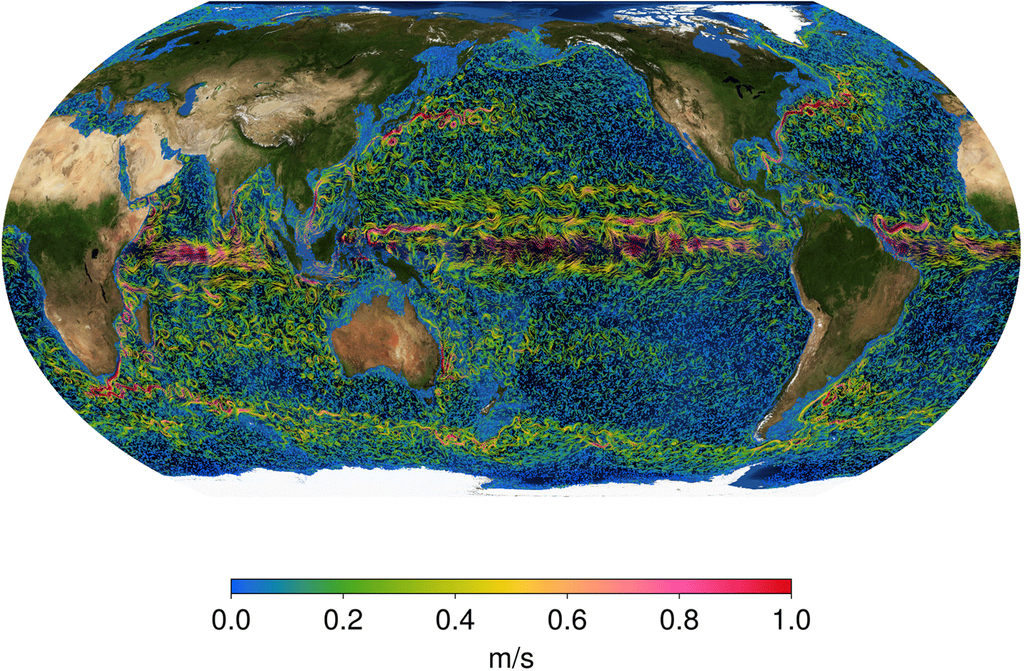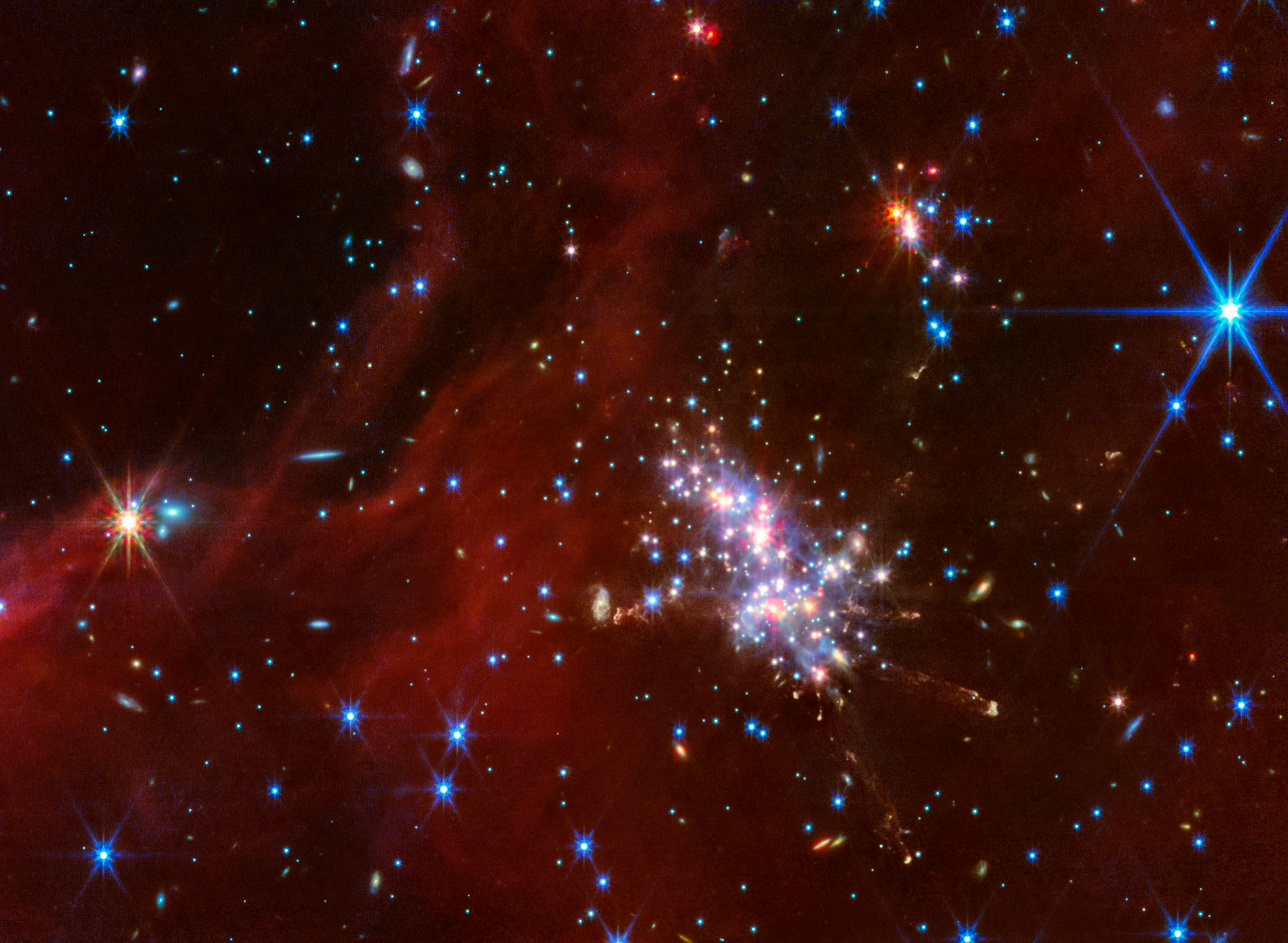1 min read
Digel Cloud 2S (Compass Image)

Annotated image of Digel Cloud 2S captured by Webb's NIRCam (Near-Infrared Camera) and MIRI (Mid-Infrared Instrument), with compass arrows, a scale bar, color key, and graphic overlays for reference.
The north and east compass arrows show the orientation of the image on the sky. Note that the relationship between north and east on the sky (as seen from below) is flipped relative to direction arrows on a map of the ground (as seen from above).
The scale bar is labeled in light-years and arcseconds. One light-year is equal to about 5.88 trillion miles or 9.46 trillion kilometers. One arcsecond is equal to 1/3600 of one degree of arc. (The full Moon has an angular diameter of about 0.5 degrees.) The actual size of an object that covers one arcsecond on the sky depends on its distance from the telescope.
This image shows invisible near- and mid-infrared wavelengths of light that have been translated into visible-light colors. The color key shows which NIRCam and MIRI filters were used when collecting the light. The color of each filter name is the visible light color used to represent the infrared light that passes through that filter.
In the main cluster are five white arrows, which highlight the paths of five protostar jets.
Extended Description and Image Alt Text
Extended Description
Annotated Image titled “James Webb Space Telescope, Star Cluster, Digel Cloud 2S,” with compass arrows, scale bar, color key, and graphic overlays.
Image
Digel Cloud 2S as imaged by NASA’s James Webb Space Telescope. At center right is a compact star cluster composed of luminous red, blue, and white points of light. Faint jets with clumpy, diffuse material extend in various directions from the bright cluster. Five white arrows trace the paths of the jets. Above and to the right is a smaller cluster of stars. Translucent red wisps of material stretch across the scene, though there are patches and a noticeable gap in the top left corner that reveal the black background of space. Background galaxies are scattered across this swath of space, appearing as small blue-white and orange-white dots or fuzzy, thin disks. There are two noticeably larger points, foreground stars, with diffraction spikes: an orange-white point on the left, and a blue-white point in the top right.
Compass Arrows, Scale Bar, and Color Key
At the bottom right are compass arrows indicating the orientation of the image on the sky. The north arrow points in the 12 o’clock direction. The east arrow points toward 9 o’clock. In the bottom left corner is a scale bar labeled 3 light-years, 16 arcseconds. Below the image is a color key showing which NIRCam and MIRI filters were used to create the image and which visible-light color is assigned to each filter. From left to right, NIRCam filters are: F115W is purple; F150W is blue; F200W is green; F356W is yellow; and F444W is orange. From left to right, MIRI filters are: F770W and F1280W are red.
Image Alt Text
Annotated image of Digel Cloud 2S captured by Webb’s NIRCam (Near-Infrared Camera) and MIRI (Mid-Infrared Instrument) with compass arrows, scale bar, color key, and graphic overlays for reference.
About the Object
- R.A. PositionR.A. PositionRight ascension – analogous to longitude – is one component of an object's position.02:48:28.45
- Dec. PositionDec. PositionDeclination – analogous to latitude – is one component of an object's position.+58:23:29.72
- ConstellationConstellationOne of 88 recognized regions of the celestial sphere in which the object appears.Perseus
- DistanceDistanceThe physical distance from Earth to the astronomical object. Distances within our solar system are usually measured in Astronomical Units (AU). Distances between stars are usually measured in light-years. Interstellar distances can also be measured in parsecs.About 40,000 light-years
- DimensionsDimensionsThe physical size of the object or the apparent angle it subtends on the sky.Image is 1.8 arcmin across (about 21 light-years)
About the Data
- Data DescriptionData DescriptionProposal: A description of the observations, their scientific justification, and the links to the data available in the science archive.
Science Team: The astronomers who planned the observations and analyzed the data. "PI" refers to the Principal Investigator.This image was created with Webb data from proposal: 1237 (M. Ressler); Image Processing: Joseph DePasquale (STScI)
- InstrumentInstrumentThe science instrument used to produce the data.NIRCam, MIRI
- Exposure DatesExposure DatesThe date(s) that the telescope made its observations and the total exposure time.17 Jan 2023
- FiltersFiltersThe camera filters that were used in the science observations.NIRCam: F115W, F150W, F200W, F356W, F444WMIRI: F770W, F1280W
- Object NameObject NameA name or catalog number that astronomers use to identify an astronomical object.Digel Cloud 2
- Object DescriptionObject DescriptionThe type of astronomical object.Star cluster on the outskirts of the Milky Way galaxy
- Release DateSeptember 12, 2024
- Science ReleaseNASA’s Webb Peers into the Extreme Outer Galaxy
- CreditImage: NASA, ESA, CSA, STScI, Michael Ressler (NASA-JPL)

These images are a composite of separate exposures acquired by the James Webb Space Telescope using the NIRCam and MIRI instruments. Several filters were used to sample wide wavelength ranges. The color results from assigning different hues (colors) to each monochromatic (grayscale) image associated with an individual filter. In this case, the assigned colors are: Purple: F115W, Blue: F150W, Green: F200W, Yellow: F356W, Orange: F444W, Red: F770W, Red: F1280W
Related Images & Videos
Share
Details
Laura Betz
NASA’s Goddard Space Flight Center
Greenbelt, Maryland
laura.e.betz@nasa.gov
NASA, ESA, CSA, STScI, Michael Ressler (NASA-JPL)




































